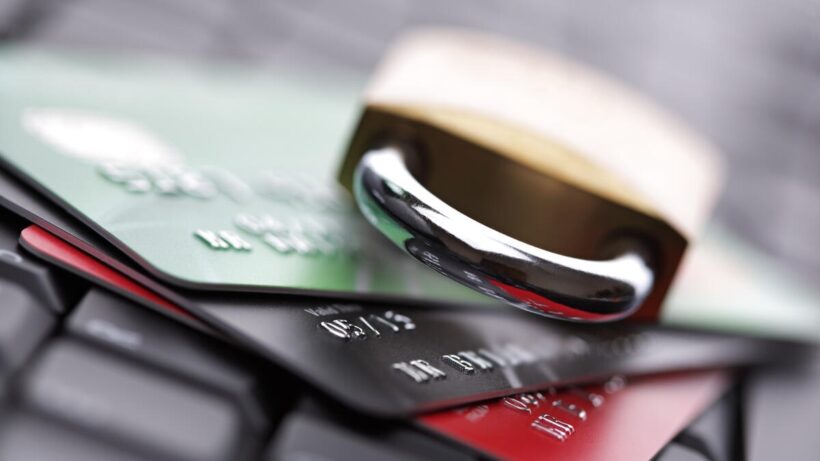The number of transactions with credit cards in the world has risen sharply in recent years. Nevertheless, many people find it difficult to put their trust in a plastic card and mention, among other things, concerns about credit card security. We explain how secure credit cards really are and what you can do to protect yourself in case of fraud.
Credit card security features
A credit card inherently has enough features to protect against unlawful debits, as certain properties are queried and checked when paying on the Internet or in a shop: These include the credit card number, the name of the credit card holder, the expiration date and the Security chip (also EMC chip). The latter is the further development of the earlier magnetic stripe and is responsible for entering the PIN, which provides additional security when paying in shops.
Building the front of a credit card
Furthermore, there is usually a hologram on the front (sometimes also on the back). Depending on the credit card issuer, a certain symbol (eg the dove and a “V” for VISA) can be seen on it under UV light. Despite high security standards, not all credit cards contain such a hologram and the EMV chip is not yet widely used on all cards.
Building the back of a credit card
On the back there is also the signature field, the magnetic strip and the check digit or card verification number, which is required for payments on the Internet. Some online platforms also claim to sell CVV numbers. Be careful while selecting CVV shop online. The signature field is the equivalent of the PIN: For credit card payments in the shop, either the corresponding four-digit number must be entered or signed. A comparison is then made based on the signature on your card.
Maintaining credit card security in-store
Warning: You have to be careful, especially since practically all cards are equipped with an NFC chip and thus allow contactless payments up to 25 euros without entering a pin. Because that means that someone can very easily use a stolen credit card to pay. A lost card should definitely be blocked as soon as possible.
The security features on the credit card are of course only important if they are in your possession. To ensure that it stays that way and that thieves have no easy game with your data, you will find important tips on credit card security in stores:
- Never keep the PIN in your wallet. It is best to have this in your head at all times and to check it at home.
- Enter the PIN as secretly as possible and make sure that you are as unobserved as possible.
- Check all statements for possible errors or incorrect charges.
- Always look after your credit card as if it were cash.
- Obtaining credit card security online
But in addition to paying at certain devices and terminals, the credit card can also be used for bookings on the Internet. In many cases, all you need to do to complete a transaction is enter your credit card number, name and check digit or card verification number – all data that fraudsters can get hold of by simply spying on or stealing your card.
Regardless of the additional protection offered by the new regulation, there are a number of things you can do to protect yourself against credit card fraud on the Internet:
Protect yourself against viruses or Trojans by paying particular attention to the integrity of websites and, if necessary, downloading software to detect them.
Only give out your credit card details during a booking and not if asked to by an unknown source.
Pay attention to HTTPS encryption or the “lock” in the URL line. This signals a secure connection to you.
Credit card theft
The loss or theft of a credit card is a horror scenario for many, so it is important to act quickly. It is better to have a card blocked too early when in reality it has only been misplaced than to react too late.
New dangers from contactless payment
In fact, credit cards have become generally more secure in the last 10 years due to various security procedures and a higher security standard, but there are also developments in the opposite direction, which have to do with the NFC chips that are now installed in almost all cards.
These enable contactless payment, which is particularly popular in times of the Corona crisis. In most cases, up to an amount of 25 euros, it is sufficient to simply hold the credit card in front of the reader; it is not necessary to enter the PIN. Some banks have now increased the amount to 50 euros.
It’s practical and hygienic. But it also means that someone with a stolen credit card can potentially pay with it for a while without being noticed.
However, there are security restrictions here that are designed to prevent the worst from happening. Customers usually have to enter a PIN again after a purchase value of over 150 euros or after 5 transactions. In addition, there are irregular PIN queries as a security check.
Laila Azzahra is a professional writer and blogger that loves to write about technology, business, entertainment, science, and health.
